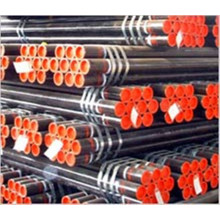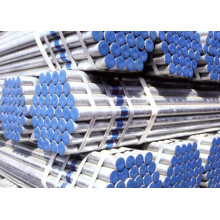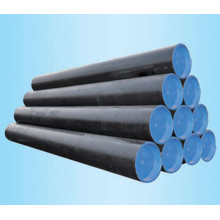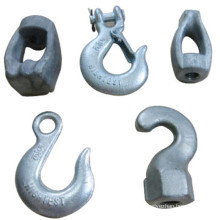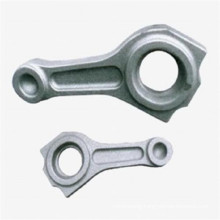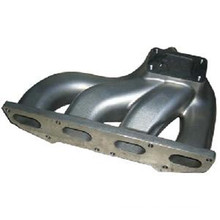Freshwater pond floating grass bed ecological disease prevention and breeding technology
2021-05-17
In order to control the occurrence of diseases, conserve water resources, improve the overall three-dimensional efficient use of ponds, and promote the development of healthy breeding, in recent years we have used ecologically controlled floating grass beds to control the water quality of the farm to achieve ecological disease prevention, and we have achieved remarkable results. Aquaculture techniques are mainly applied to monoculture and polyculture ponds such as soft-shelled turtles, loach, squid, squid, and white prawn, and are not suitable for grass carp, crayfish, and crab ponds. The farming technology method is introduced as follows:
Pond conditions
Aquaculture ponds are divided into solar greenhouses and natural ecological ponds. The area should not be too large (500 square meters to 1,500 square meters for greenhouses and 5 acres for natural ponds) to facilitate management and fishing. The ponds surrounding the Yellow River turtle should be equipped with anti-escape walls (approximately 0.5 meters high) and feeding baits. The tiles for 60 minutes (or 80 centimeters) for escape prevention should be buried along the perimeter of the pond by 20 centimeters. Arcing to prevent the turtle from escaping. Around the mud aquaculture pond (about 0.5 meters in the water bank) should be built to prevent fleeing the net (prevention of net escape using 10 mesh -20 mesh mesh, buried under 50 cm, with 1.5 meters of bamboo raft or cement rod support, surface water on the Internet to stay There is more than 50 cm of space) to prevent muddy holes and fleas from escaping. About 15 days before stocking, the seedlings must be cleared first, and the clear ponds are generally cleaned by dry ponds. The whole pool should be splashed with quicklime (75 kg/mu) or bleaching powder (10 kg).
Water and fertilizer
The aquaculture water source is underground well water, with good water quality and no pollution. The water temperature in spring is low, and the water in the early stage should not be too deep, generally about 0.5 meters. Afterwards, as the water temperature rises, the water level gradually deepens. The purpose of fertilization is mainly to reproduce the aquatic organisms, and then feed and grow after the seedlings grow in the pond. It is not necessary to fertilize ponds that stock large-sized turtles. The fertilizer is divided into organic fertilizer, inorganic fertilizer and biological fertilizer.
Seed selection and stocking
When selecting seedlings (species), the general principle is to select strong individuals with strong vitality, neat specifications, and no disease or injury. Stocking specifications are determined according to their needs. The species of the Yellow River squid should be stocked with 50 g or more according to the breeding needs, and the muddy larvae should be stocked with seeds more than 4 cm in size. The stocking time depends on the temperature of each place and the appropriate temperature of the cultured species. The seedlings must be disinfected before the lower pond to kill pathogenic bacteria and parasites. This is an important part of fish disease prevention and control. The disinfectant drugs include 3%-5% saline solution for 10 minutes to 15 minutes, potassium permanganate 10ppm for 10 minutes to 20 minutes, and povidone-iodine 10ppm for 10 minutes. The stocking quantity varies according to the seed size and design yield. Different stocking densities vary. Generally, stocks of 50 g to 100 g/head are stocked with 4 stocks of only 5/m2, and stocks of about 250 g/head are stocked with 2 seedlings of only 3 eggs/sq. Rice, mud larvae generally stocked 4 cm-5 cm seedlings 50,000-60,000 / acre. At the same time, in order to make full use of the pond space to adopt a multi-culture model of ponds, the mixed species generally account for 70%-80% of the main breeding species, while the polyculture species account for 20%-30%.
Construction of floating grass beds
1. Water grass varieties floating bed: water hyacinth, water cabbage, bamboo leaf vegetables.
2. The role of floating grass bed: aquatic organisms in the growth process due to the death of leftover baits, excrement and aquatic plants will produce a large number of organic substances, the oxidation and decomposition of organic substances will produce a large number of toxic substances such as ammonia, hydrogen sulfide, etc., causing aquaculture water Pollution causes damage to the growth of aquatic organisms and causes disease. Through the construction of aquatic floating grass beds, growth and propagation of aquatic plants on the grass bed will absorb organic substances and ammonia, hydrogen sulfide, and other harmful substances in the pond aquaculture water environment through the root system, purify and optimize the aquaculture water environment, and reduce wastewater discharge and Aquatic biological diseases occur and achieve healthy and clean production.
3. Construction of floating grazing beds for water hyacinths and cabbages: A frame is to be made from the four corners, one end or inside of the pond with bamboo ridges. It is fixed around four to one-thirds of the aquaculture water, and water hyacinths should be transplanted after May. Water cabbage enters the pond (introduced in the greenhouse in April). Water hyacinth and water cabbage absorb organic substances in the water in the frame and the harmful substances such as ammonia nitrogen and hydrogen sulfide produced by the oxidative decomposition of organic substances grow and multiply to form grass beds. The role of the disease.
4. Construction of bamboo leafy floating grass beds: Bamboo leaf vegetables are also known as water spinach, green vegetables, and vine vegetables, and scientific names are leeks, annual or perennial herbaceous plants. Rich in vitamins and mineral salts, it is an important vegetable in summer and autumn. The cultivation of water spinach on bamboo floating bed has realized the healthy growth of bamboo leafy vegetables and fish. It not only makes full use of water space and resources, but also realizes the recycling of material and energy and improves the benefit. At the same time, It absorbs ammonia nitrogen, hydrogen sulfide, and organic substances in the water, purifies the water quality, and provides an excellent shading environment and growth environment for the growth of aquatic organisms.
Bamboo leafy vegetables are mainly used for seed germination on the land and transplanted into the floating bed in the pond.
(1) Bamboo leaf dishes.
Site Preparation: Land use for nursery, first turning soil and leveling. An earth dam 40 centimeters to 50 centimeters high is built around the flat land for irrigation purposes. Plane a ditch with a depth of about 10 cm, a width of 15 cm - 20 cm, and an interval of 15 cm between the two ditch. Apply enough base fertilizer. The base fertilizer can be manure such as pig manure and chicken manure, or compound fertilizer. Decomposed organic fertilizer: 500 kg - 1000 kg/mu. Compound fertilizer: 50 kg/mu.
Seeding: sowing seeds before sowing, looking for a good flat land, padding with plastic cloth, spreading seeds on top, drying in sunlight for 5-6 hours, can increase the germination rate of seeds. However, when sunning, you should turn it on every other hour.
When sowing, the sun-dried seeds are evenly sprinkled in the ditch, and after the seeds are sown, a layer of carbendazim (a wettable powder) can be applied to the seeds to prevent pests and diseases in the soil. Then cover the soil and cover the thin soil with a hoe, not more than 2 centimeters, and level the ditch. Watering, water to be drenched.
Seedling management: the temperature of bamboo leafy vegetables during the nursery period is generally between 15°C and 45°C. Water is poured once a day, each watering must be thoroughly drenched, and young seedlings will grow in about 5 days. When the seedling grows to about 10 cm, it is not just water but water. It is mainly the characteristics of "his water". Do not fertilize the seedlings, but to ensure the water requirement of the seedlings. At the same time, no seedlings are needed.
(2) Floating bed production.
Generally made of bamboo or PVC pipe floating bed, according to the length and width of the PVC pipe will be cut into 3 meters -5 meters long, 0.5 meters wide segment, two with a cap plug, and then tie the PVC into a rectangular box, and then small The plastic tube is fixed at a distance of about 20 centimeters with a nylon cable tie or clips on a PVC pipe rack, or a mesh sheet is fixed on the rectangular frame formed by PVC. A floating bed made of PVC is ready. PVC Pipes can also be made of bamboo or other materials. After the floating bed is done, it is fixed on the water. The seedlings are then transplanted into the floating bed at a certain distance.
(3) Transplanting seedlings.
When the seedlings grow to 20 cm to 25 cm, they can be transplanted into a well-made floating bed. On the day before transplanting, the nursery land is filled with water. When this is pulled out of the land, it will not hurt the roots of the seedlings because the land is wet. Wash the soil from the roots of the drawn seedlings with clean water so as not to bring the bacteria in the soil into the water. If the transplanted seedlings are not transplanted in time, they can be put in pots filled with fresh water and stored temporarily. The height of the water just soaked in the roots, so you can keep fresh for 7 days.
Water colonization: The seedling roots can be inserted into small plastic tubes. Each plastic tube only grows one seedling. The leafy leaf planting area accounts for about 1/5 of the pond area. The area is too large. The bamboo leafy dish grows fast. Inadequate harvesting will affect pond lighting.
(4) Growth and harvesting.
Bamboo leafy vegetables grow on the water surface of the pond and absorb organic matter in the water. There is no need for fertilization. After about 25 days of transplanting bamboo leafy vegetables on the floating bed, the seedlings can grow to a height of 50 cm - 60 cm. Close, do not have any tools when harvesting, just need to hand cut from the second radial above the water surface. When harvesting, as long as it does not damage the root of bamboo leaf vegetables generally will not affect the late growth.
Aquaculture management
1. Feed the bait. Feeding of bait adheres to the principle of "four sets of decisions," namely, "quality, quantity, timing, and positioning", and feeding methods will change due to the living habits of cultured species.
Qualitative. The bait requires palatable, like food, the Yellow River mouth turtle feed should be fed turtle feed, feed now. Loach feed uses special compound feed. The protein content of compound feed must meet the nutritional requirements of different stages of growth of aquatic organisms, and the appropriate particle size should be determined according to the specifications of the fish body.
Quantitative. The daily feeding amount in the seeding period should account for 5%-8% of the fish's body weight, and the daily feeding amount in the adult period should account for 2%-3% of the fish's body weight. The daily feeding amount increases as the fish's body weight increases. Every day, the bait is fed in two to three feedings (two feedings of turtles and three feedings of loach), and the optimal amount of food for each feeding should be about 80% of the satiety;
timing. The time for feeding each day should be relatively fixed. Choose a day when the oxygen is high, such as eight or nine in the morning and three or four in the afternoon; avoid high temperatures at noon.
Positioning. The bait should have a fixed position. The Yellow River turtle should use a asbestos tile or porcelain plate to set up a bait station on the sunny side of the pond. There are two feeding methods for the Yellow River turtle. The first is to feed the soft-shelled turtle compound feed to the feed. On the stage (water feeding); Second, the turtle feed formulated into pellets, fed to the underwater feeding bait (this method is suitable for the cultivation of the Yellow River turtle species in the greenhouse under the hardened pool). Mud smell is more sensitive and easy to form conditional reflexes. A feeding point can be set at a pond for feeding.
2, water quality management. During the aquaculture process, in addition to the water purification plant floating bed, depending on the water quality and management, the following methods can be used to adjust the water quality. One is to add new water in a timely manner. During the production process, due to water evaporation and a small amount of leakage, new water is flushed according to the situation. The second is using an aerator. Conditioned ponds can use growth machines to create convection in pool water, increase dissolved oxygen, and emit toxic substances in water. The third is the use of beneficial microbial agents. Beneficial microorganisms such as photosynthetic bacteria, Bacillus, EM bacteria, etc., harmless to humans and livestock, can effectively use the organic pollutants in the water as their own nutrient source, and maximize the rapid purification of water by means of photosynthesis; enhance the body immunity of aquatic organisms, Prevent diseases; promote the growth and reproduction of zooplankton and make the water become fat without pollution. 3, disease prevention and treatment. Disease prevention and control in aquaculture follows the principle of “prevention first, comprehensive prevention and control”. Disease prevention runs through the whole process of production, including disinfection of drugs in clear ponds and seed stocks, growth of aquatic organisms using floating floating grass beds, and optimization of aquaculture water environment using microecological preparations. At the same time, it should be well managed for feeding and patrolling. Breeding equipment disinfection.
Towable Tube for Thrilling Aquatic Adventures and Watersports Fun!
Lixin Outdoor Product Co., Ltd is OEM & ODM manufacturer of inflatable products in the mainland of China with more 17 years of manufacturing experience. products ranges are inflatable toys, inflatable pools, inflatable pool floats, towable tubes, air furniture and Promotional Items etc. total have more than 1500 employees (4 factories) related to PVC inflatable products.
Operated under ISO 9001:2015 management system, We had passed factory Audit by Walmart, Taret, Disney ect, also passed all necessary certificates and testing such as ICTI, BSCI, SEMTA,Target FA, NBC Universal, FCCA, SGS, CVS Security, GSV, Disney FAMA ect. We have our own PVC raw materials manufacturing company, all the PVC we produced are compliance with European EN71, American ASTM standard and NON PHTHALATE (6P) standard.
3 person towable tube, best towable tubes, boat towables, 2 person towable tube, towable inflatables
Shenzhen Runpeng Precision Hardware Co., Ltd. http://www.jmpoolfloat.com

